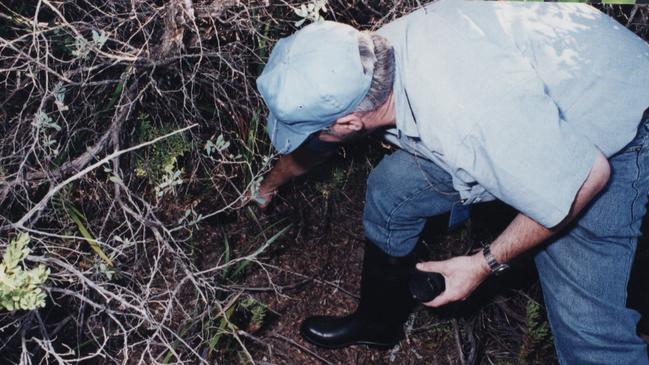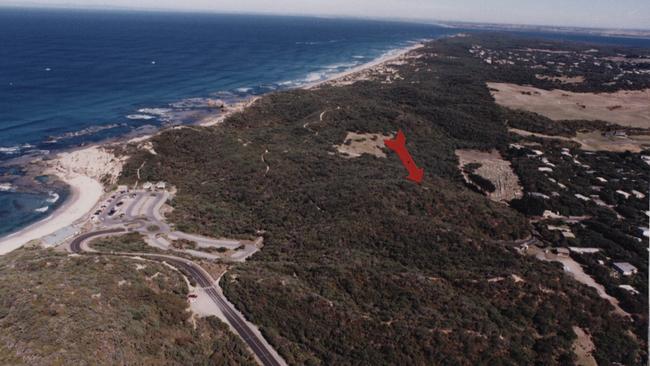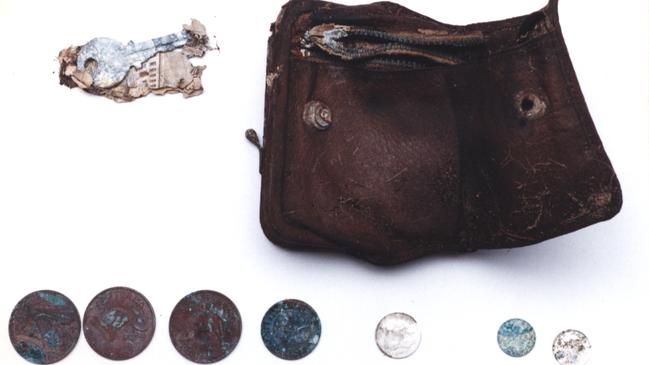How gruesome find finally brought peace to a family
A skeleton found beside a pair of stockings and purse in Sorrento bushland led Rowland Legg to a rare bright spot among the darkness of life as a homicide detective.

Police & Courts
Don't miss out on the headlines from Police & Courts. Followed categories will be added to My News.
Rowland Legg is one of Victoria’s most experienced murder investigators. In a new series he delves into some of his strangest and most challenging cases.
Fine days bring out bushwalkers and bushwalkers make discoveries. On occasions they find bones which more often than not are of historic Aboriginal origin, located in ancient Aboriginal burial grounds, or are the remains of animals.
At 1.30pm on 17 February, 2001, two young men entered a fenced-off vegetation regeneration area adjacent to the Sorrento cemetery. They walked through dense bushland to the top of a hill and there came across some bones, a belt, the remnants of a shoe and a human skull. Local police were called and later that afternoon, being the on-call homicide squad crew for the state, we attended with police crime scene examiners and the on-call pathologist Malcolm Dodd.
The first priority in such a situation, while as usual being conscious of scene preservation, is to establish whether the skeletal remains are those of an animal. The skull obviously resolved this.
Dr Dodd was satisfied the bones were not the remains of an Aboriginal person and had probably been there for well in excess of ten years. As is usual, an anthropologist subsequently also examined the full skeleton with Dr Dodd at the mortuary to confirm all and establish among other things, stature.

After the area was videoed and photographed the skull was moved and showed no signs of injury. The exposed remains were then secured at the Sorrento Police Station and local police organised to guard the scene overnight.
Before we left for Melbourne at 10.30pm some local inquiries were conducted and a full search arranged for the following day.
That morning I briefed searchers for the surrounding area before Dr Dodd and crime scene examiners commenced the dig.
In Melbourne our analysts were sifting through a multitude of missing persons reports in an attempt to identify the deceased.
Among the reports exposed was that of Prime Minister Harold Holt, who disappeared in the area on 17 December, 1967.
By early afternoon, Dr Dodd and crime scene examiners had exhumed 80 per cent of the skeleton, which was not deeply covered by sand.
Also unearthed were a pair of glasses, stockings, a makeup compact, a purse containing coins (the most recent of which was minted in the mid- 1950s), two glass medicine bottles, the lower jaw bone containing a full set of teeth with some gold fillings, a glass eye and a post-mastectomy bra which indicated the lady’s right breast had been removed.
Indications were the Deceased had been tall and heavy boned. Later the metal detector also located a watch and a ring on which was inscribed the date “26/02/1933”.

Shortly after 5pm the call came through; a probable identification.
The report of a missing person, Beatrice Frederika Hearst, had been located. Mrs Hearst was a 45 year-old woman who had lived in Elsternwick with her husband and two teenage daughters.
On 13 February, 1958 at 9.30am she had left her home to shop and had not been seen by her family since. She was described as a nervous person who suffered from cancer and was known to have blackouts. During the preceding two years she had undergone two operations, one of which involved the removal of a breast.
In May 1958 a supplementary report was submitted by police at Elsternwick. It had been discovered that on the day Mrs Hearst disappeared, a woman of similar description attended a doctor’s surgery in Sorrento using the name Brown and giving an address in Orrong Road Elsternwick.
She was prescribed Phenobarbital medication which was then dispensed at a nearby pharmacy in Main Street, Sorrento. She was neither seen nor heard of again.
Attached to the missing person file was an accident report dated Saturday 23 November, 1957. It recorded that at 9.24am that day Beatrice Hearst fell or threw herself into the path of an oncoming train at the Elsternwick railway station.
She landed between the railway lines with two carriages passing over her before the train stopped, but she was not injured. We managed to find a woman who had known the deceased. Through her we established Mrs Hearst had also rented a room in Queens Road Melbourne. There she had taken an overdose of tablets, however stomach pumping had saved her on that occasion.
Our inquiries also resulted in locating a relative of the Sorrento pharmacist who still had the book showing the dispensing for a Mrs B. F. Brown on 13 February, 1958. Bottle analysis later confirmed the medication.
It is assumed Mrs Hearst travelled from Elsternwick to Frankston by train and on to Sorrento by bus. After having the medication dispensed, she most likely walked to and up the isolated and exposed hill beside the Sorrento cemetery, consumed the medication and died there as a result.
Experts were consulted and the assessment was that over the years the strong winds from Bass Strait almost covered her remains with sand. Growing vegetation contributed to the concealment.
Considering 43 years had passed since the disappearance, we were particularly pleased to locate an old friend of Mrs Hearst who was able to provide the whereabouts of the deceased’s daughters.
One had moved to North Queensland and the other we found in Melbourne. Her sister had relocated to South East Queensland. We had the daughter who lived locally brought to our office and gave her a full account of the results of our inquiries, along with her late mother’s watch and ring.
She sat crying as she expressed her appreciation and relief, having thought she would never know what had happened to her mother.
The work of the Homicide Squad involves much darkness and sadness, however there are brighter and rewarding days.
– with Mark Buttler
Rowland Legg is one of the state’s most experienced and respected murder investigators. By the time he retired in 2010, Mr Legg had worked for 18 years in the homicide squad, 15 of those as a senior-sergeant leading a crew of detectives. Mr Legg and his crew investigated some of the state’s biggest cases and others little known.



